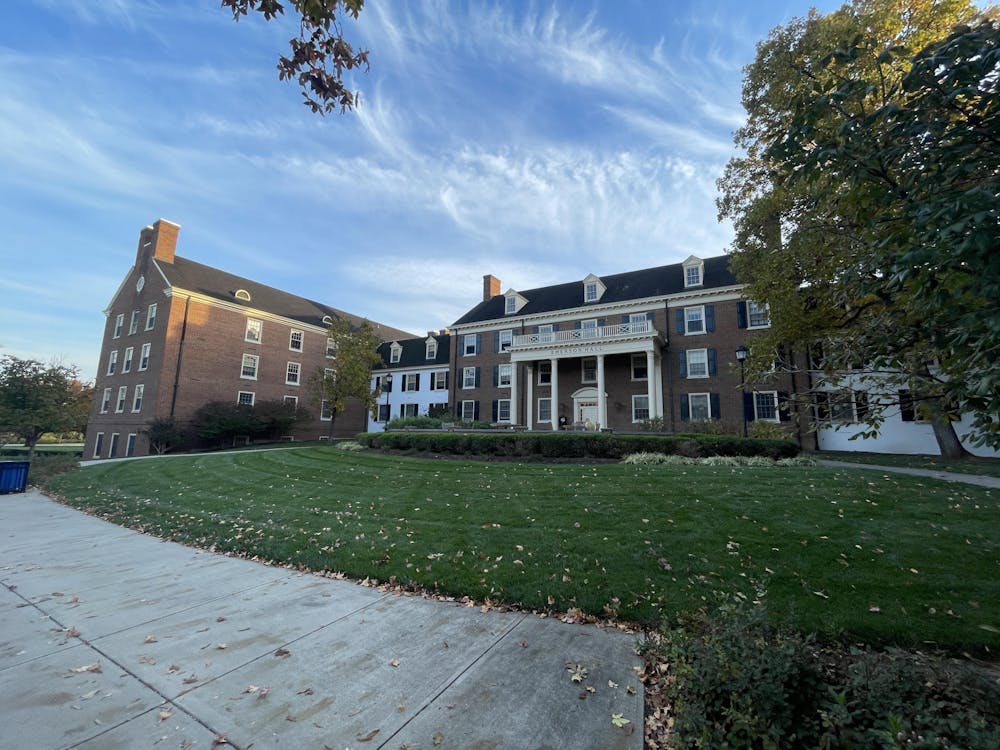Editor's Note: Rob Abowitz, associate director of residence life, clarified after this story's initial publication that the current pay system for resident assistants (RAs) was preferred to waiving room and board fees, according to feedback from past RAs.
Kylee Pierson became a resident assistant (RA) at Miami University for both the financial benefits and leadership experience. After going through the application process and training, she found out that the job isn’t always what it seems to be.
As a former RA, Pierson was required to go through two weeks of training in the summer, a credit hour course during the semester and many late nights in the residence hall.
According to the Office of Residence Life at Miami, RAs receive a stipend that compensates in the form of 10 installments over the course of 10 months. The pay is based on what residence hall the RA is assigned to and compensation for programming varies on how many residents they oversee.
The Office of Resident Life’s website states, “All RAs are expected to pay their housing costs on the same schedule as other students (typically upfront), and the RA leadership stipend reimburses those costs in monthly installments.”
RAs play an integral role in on-campus living, and for students living far away from home for the first time, RAs are critical. They take on many different responsibilities and are employed by the university to create a positive environment, encourage students to participate in the Miami community and enforce different policies.
Miami falls behind other institutions like Ohio University (OU) and Ohio State University (OSU) that have created a more financially relieving way to become an RA, which is reflected by the experience of their students.
George Getsy, a junior student at OSU, has been an RA for two years now. For him, the experience has been nothing but positive, but OSU’s system for paying RAs differs from Miami’s. Getsy receives free housing as an RA, as well as a bi-weekly stipend of about $160.
OU sets up its RA program in a similar fashion. Jen Maskiell, director of residence life operations, said that OU sets up their RA wages in relation to the time an RA has spent in the program.
“New resident assistants are paid $3,270 annually and returning resident assistants are paid $4,208 annually,” Maskiell said. “The cost of the staff room is covered at 100% while residing on-campus, and RAs are provided with uniforms such as t-shirts and pullovers for special events, at no cost to them.”
RAs also receive free room and board at Miami, with a catch. Students must first pay for their room and board upfront, and then it is reimbursed later in the year. Pierson was an RA at Heritage Commons and was surprised when she first found this out.
“I didn’t realize that either, because you would think they would just make you not pay for the room and board at the beginning of the year,” Pierson said. “But you have to have the money to pay it upfront which can be problematic for some people … so my bill went up two grand, and I just had to be able to pay.”
Enjoy what you're reading?
Signup for our newsletter
Sloane Faller, a current RA in Hamilton Hall, outlined what the training is to become an RA at Miami.
“We went through five extensive days of training,” Faller said. “The training consisted of lectures, we sat through a lot of information on how to write incident reports and how to contact, things like that.”
Despite concerns from Miami RAs, OSU RA Getsy feels his pay reflects the amount of work he does.
“Personally, I feel that the pay from being a resident adviser is fair regarding the work that we do,” Getsy said. “The workload is flexible and our supervisors and co-resident advisers are willing to work with us when we need support.”
This is not reflected in Pierson’s experience where she felt her experience in Heritage Commons was very different from how the OSU RA described his experience.
“There are only six RAs that cover the entire area … I was overseeing 70 residents, walking up and down six floors while having to be on-duty a lot more than the other RAs on campus,” Pierson said. “On top of that, meal plans are not covered and I never tallied up exactly how many hours I worked but it never really seemed like enough pay.”




